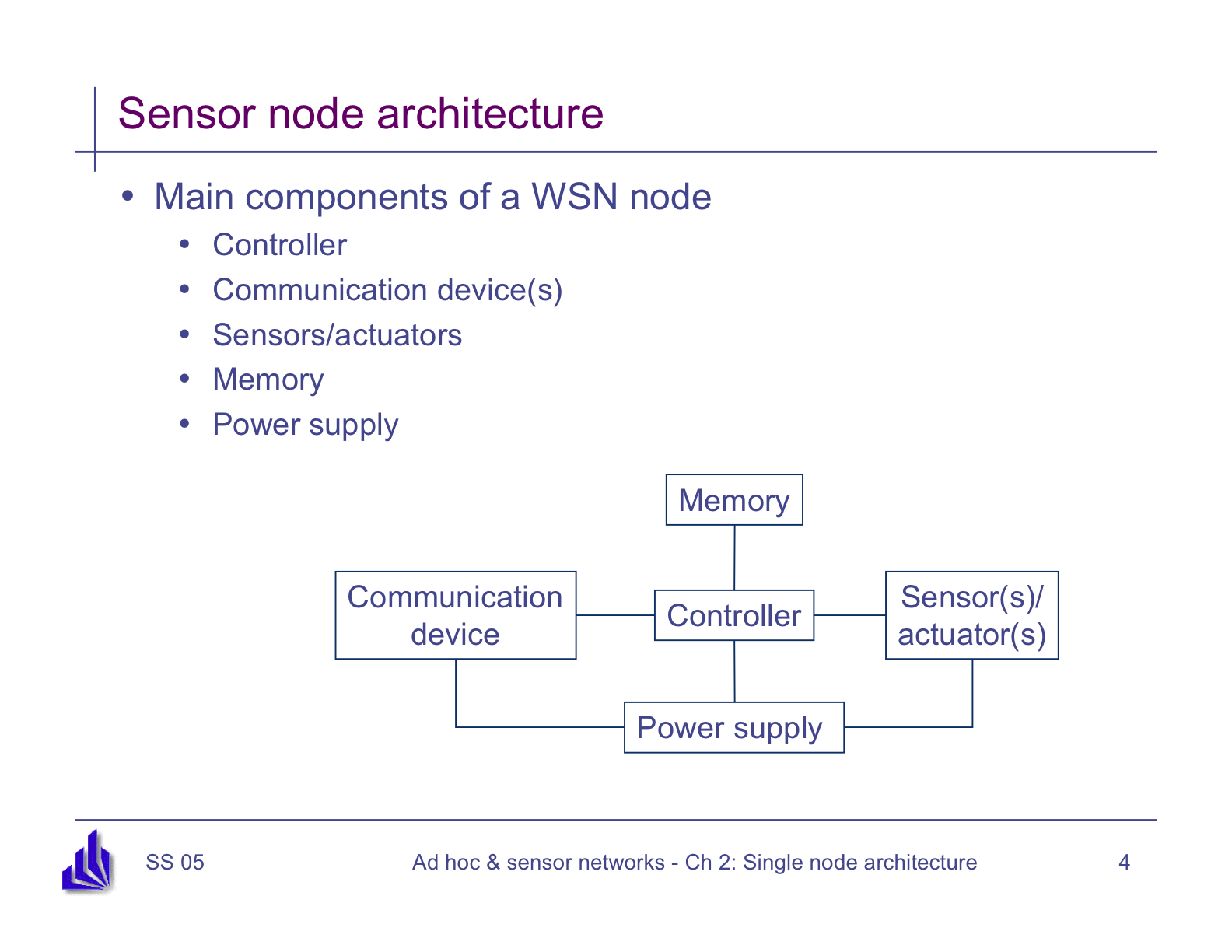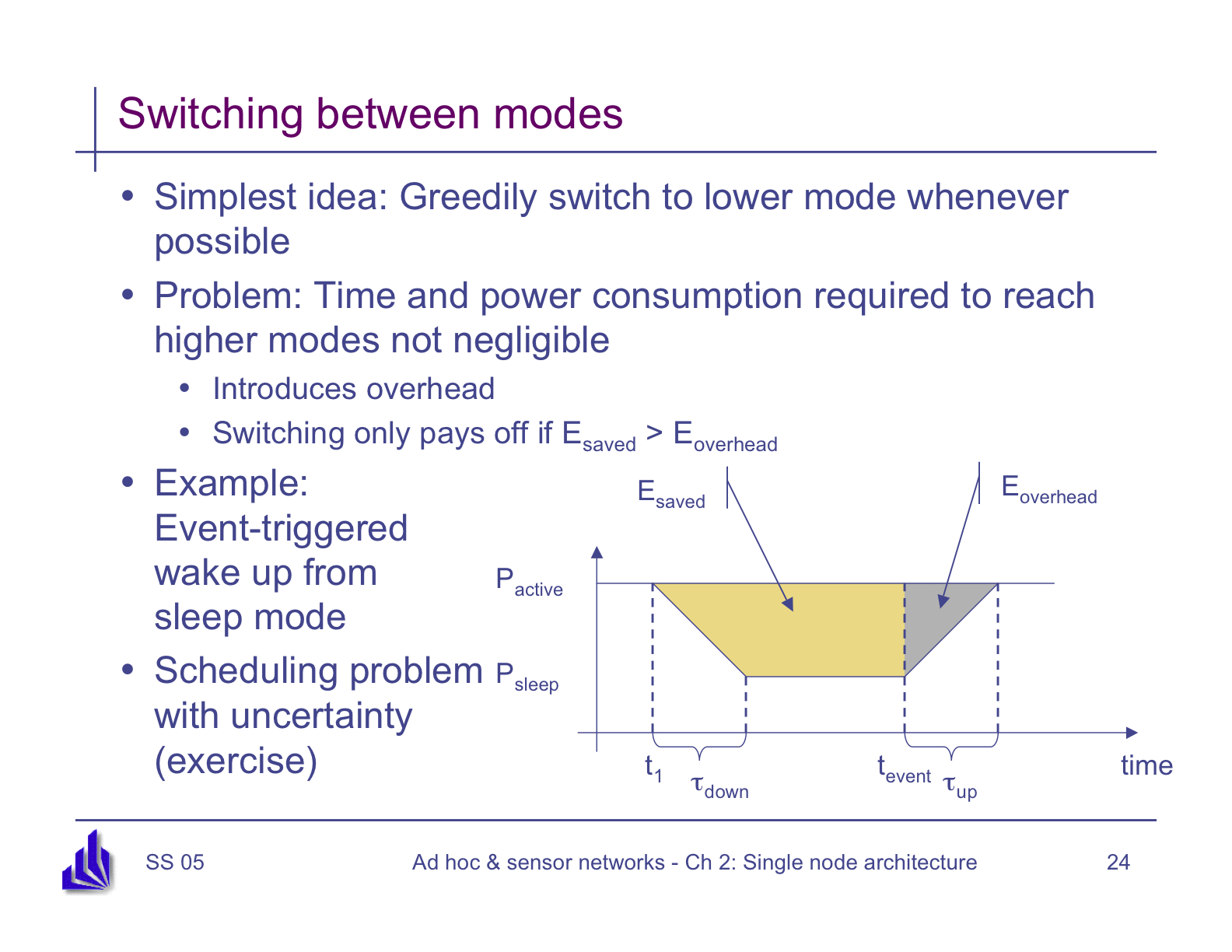Hardware Components
Some images taken from http://www.cs.uni-paderborn.de/index.php?id=1119&L=1
Overview

Controller
- CPU of the node
- microcontrollers - processors designed for embedded systems
- Crossbow Mote - Imote2 = Intel PXA271 XScale CPU (13-416MHz)
- SPOT - 180MHz 32-bit ARM920T core processor
- Dynamic Voltage Scaling - adjust speed of processor to control energy consumed.
Memory
- Nodes typically have a small amount of RAM and some flash.
Flash typically incurs long read/write access delays and requires
significant energy for access.
- Imote2 - 32MB FLASH, 32MB RAM
- SPOT - 512K RAM and 4M Flash
Communication Device
- Nodes typically use RF-based communication.
- Long range
- High data rates
- Acceptable error rates
- Reasonable energy expenditure
- No line of slight required
- Imote2 - 802.15.4 radio, 250kb/s data rate, 30 meters
- SPOT - 802.15.4 radio, 80 meters
- Transceivers typically half duplex; cannot send and receive at the same time
- Typically support 4 states: transmit, receive, idle, sleep
- Often transmission power control is adjustable. More power used to transmit = greater range.
- Some simple transceivers lack unique address. SPOT have 64-bit IEEE address (analogous to MAC address).
Sensors and Actuators
- Sensors
- Passive, omnidirectional - thermometer, light sensor
- Passive, narrow beam - camera
- Active - radar
- Actuators - "open or close a switch or relay" (e.g., light bulb, motor)
Energy Management
- Significant concern for sensors
- Most components of node can be turned off or put into low-power state when not in use (radio, controller, sensors)
- Transitioning from low-power mode to operational costs time and energy

OS/Programming Environment
- Imote2 - TinyOS, nesC
- SPOTs - Squak VM on hardware
Sami
Rollins
Date: 2008-04-18


